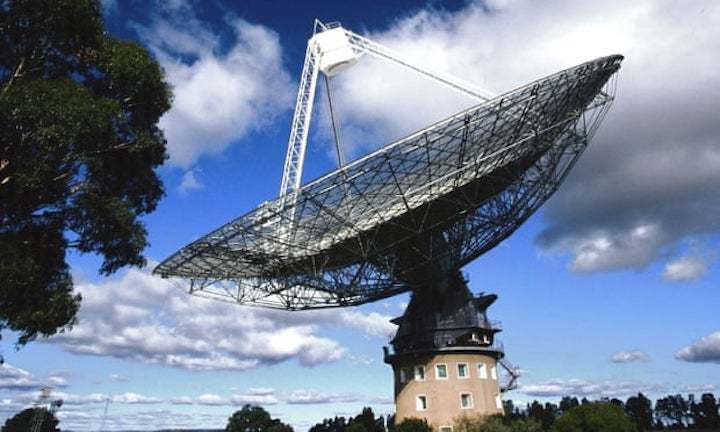Astronomers searching for alien life thought they’d spotted signs of intelligence beyond the solar system – but the signals turned out to be human.
Parkes Observatory’s Murriyang radio telescope detected “promising” radio signals that seemed to be extraterrestrial in 2019. The strange signals appeared to come from Proxima Centauri, the Sun’s nearest neighbouring star.
Proxima Centauri is a mere 4.24 light years away, and is orbited by two planets. One of them is Earth-like and thought to be in the “habitable zone” where liquid water exists. (Although the exoplanet has been blasted by extreme flares from the red dwarf star, making it less hospitable.)
Scientists involved in the search for extraterrestrial intelligence (Seti) processed the signals and thought they could be a “technosignature”, evidence of alien technology. But it was not to be.
In two articles, written by an international team and published in the journal Nature Astronomy on Tuesday, researchers reported while the signals were “broadly consistent” with a technosignature, they were most likely an “intermodulation”.
Co-author on both papers Dr Danny Price said they still don’t know exactly what caused the ET-like pattern, but used the analogy of a guitar amplifier to explain what happened.
“We think it was an intermodulation, which happens in an amplifier when you have more than one frequency running through it,” Price, who also works for the Curtin University node of the International Centre for Radio Astronomy Research, said.
“In a guitar amp, for example, if you’re listening to rock, to Nirvana or Black Sabbath, the guitar has a distinct distorted tone. That’s because you’re deliberately tuning the amps and going into overdrive.
“You take the frequencies and make new frequencies. We don’t think it’s being done on purpose, it’s just an amplifier not acting properly.
“It’s more than one signal and they have mixed together in a complicated way.”
Price said to think about “turning it up to eleven”, as in the mockumentary This Is Spinal Tap.
So somewhere in the area around Parkes, some malfunctioning device made it look as though someone – or something – was out there.
Radio frequency interference (Rfi) is such a common problem for astronomers that they are constantly looking for quieter places to study the sky – such as the Square Kilometre Array, which is being built in Western Australia’s vast outback.
United States space agency Nasa is even planning to put a radio telescope on the far side of the moon, where it will be shielded from Earth’s cacophony.
A microwave oven was famously responsible for a mystery that plagued CSIRO scientists for 17 years. If the microwave was opened while it was still heating, the telescope registered a signal that looked like it came from the atmosphere. Back in the 1960s, a pulsar star was mistaken for signs of aliens.
The latest search is part of Seti’s Breakthrough Listen project, and the signals were the first candidate they were working on. A Guardian article last year revealed the $100m project was the first serious candidate since the “Wow! signal” in 1977, when astronomer Jerry Ehman circled a record of radio wave blasts and wrote “Wow!” next to them.
Previous patterns have turned out to come from Rfi.
Many things cause Rfi, Price said. Phones, satellites, basically anything that is used to communicated or transmit data.
So scientists have a rigorous process for weeding out the faux-alien signals.
Price said the signal mimicked the way Proxima Centauri moved as seen from Earth – more slowly than a plane or a satellite. They ruled out cheap electronics, which can cause Rfi, but in a “wiggly” way. Then they consulted a registry of broadcasts to be sure it wasn’t in the range of telecommunications or media.
“It passed all the tests that we went through,” he said.
The signal also showed a Doppler shift, the sort of change in frequency that shows an object is moving, such as when an ambulance is moving towards or away from you. That again pointed to it coming from a moving planet.
But in the end they found the signal matched others they know are from the Earthly realm, and the hopes of having spotted an alien civilisation were dashed.
It wasn’t in vain, though, Price said, because now they have developed a new framework to study future signals, a checklist that will be used around the world in the search for life outside it.
“We would love for it to have been a technosignature,” Price said. “But for now it’s an excellent case study.”
Quelle: The Guardian
+++

